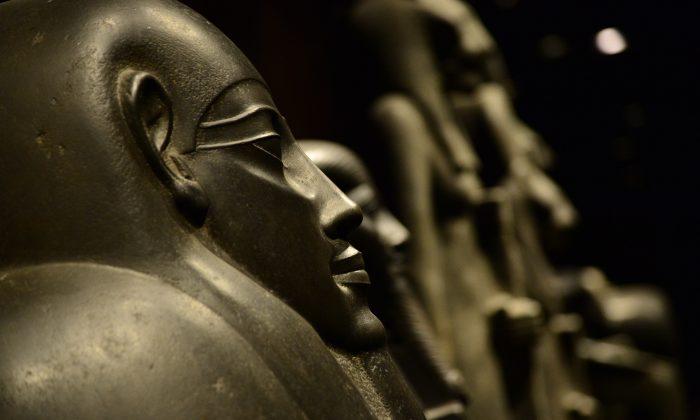The remains of an ancient Egyptian pharaoh who ruled in the Third Dynasty (c 2700 B.C.) appears to have the “body of a giant.”
In a study published in The Lancet Diabetes & Endocrinology, experts analyzed skeletal remains discovered in 1901 in a tomb near Beit Khallaf, Egypt. It is unclear who the tomb belonged to but after relief fragments bearing Sanakht’s name were found, people believed it was his tomb.
The skeleton of the pharaoh was around 187cm or 6 feet 1 inch tall. This is much taller than other Egyptians at the time who normally reached heights close to 5 feet 4 inches.
According to Habicht the long bones showed evidence of “exuberant growth,” which show “clear signs of gigantism,” he said.
“The alleged Sa-Nakht probably had gigantism, truly being the oldest known palaeopathological case in the world,” authors of the study wrote.
No other ancient Egyptians from the royal family were believed to be giants.
“Even though the kings were taller than commoners, the alleged Sa-Nakht is much taller than other royals,” the study reads.
The study also indicated that the condition was not associated with social isolation because he was buried with honors in an elite mastaba-tomb.
Since royal Egyptian kings were probably fed better food and were generally in better health than the peasants from the same era, it’s normal for them to be a bit taller than average, Live Science reports. But the researchers said that the 6-foot-1-inch remains are even taller than Ramsses II, the former tallest recorded ancient Egyptian pharaoh who was only about 5 feet 9 inches or 175m tall, Habicht said.
Even though the researchers admit, “It is far from certain whether the remains are really those of King Sa-Nakht” the potential gigantism medical case “has a great value as it could be the oldest known case.”
“While short people were much preferred in ancient Egypt, especially in the early dynastic period, we have no records that very tall people had any special social preference or disadvantage,” the researchers wrote.





